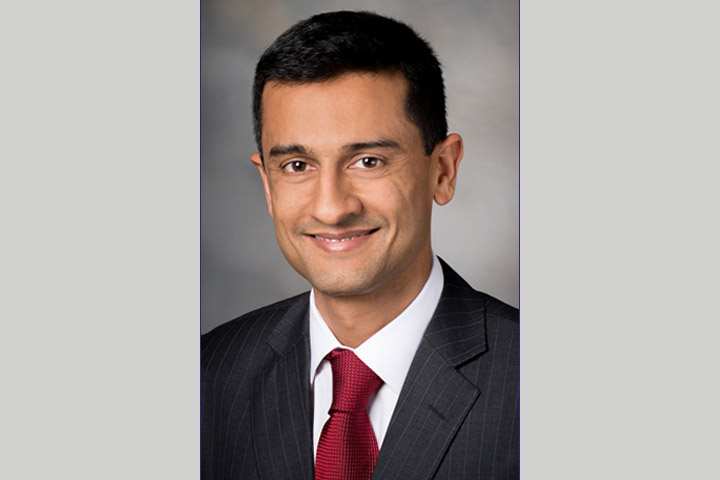Prognosis: More Than Numbers in Pancreatic Cancer

When you learn you have pancreatic cancer, the diagnosis hits you like a ton of bricks.
Prognosis—the likely course of the disease—looms ahead. But how can you be expected to survive the cancer if you can barely survive the news?
As you research, you are bombarded with numbers. Is your cancer stage I, II, III, or IV—has it spread and how far? The percentage of those diagnosed with pancreatic cancer who survive at least one year is small. The percentage who are still alive after five years is even smaller.
Prognosis is based on statistics, on what happened to the people who came before you. Statistics are scary and not necessarily reliable. They are estimates based on previous outcomes of large numbers of people who had a specific cancer. They can’t predict what will happen in your case.
Making Sense of Prognosis
If you would like to try to make sense of the numbers, here’s a guide.
Overall survival rates. Based on research from information gathered on hundreds or thousands of people with a specific cancer, overall survival rates include people of all ages and health conditions who have been diagnosed with your type of cancer, including those diagnosed very early and those diagnosed very late. For pancreatic cancer patients diagnosed between 2008 and 2014, that rate was 9 percent, according to the American Cancer Society.
Relative survival rates. These rates compare people having the same type and stage of pancreatic cancer with people in the overall population. For those whose cancer has not spread, for instance, the five-year relative survival rate for pancreatic cancer is 37 percent, meaning 37 out of 100 people diagnosed with pancreatic cancer between 2008 and 2014 were alive five years after diagnosis.
Disease-free survival rates. This number indicates people who have no evidence of cancer after treatment. Many clinical trials also measure and report these statistics.
Progression-free survival rates. This rate indicates the number of people who have been treated for cancer and either have no signs of cancer recurrence or have cancer that has remained stable without growing.
Survival rates are calculated based on how many people are still alive after a specified length of time (often five years). Neither overall survival rates nor relative survival rates specify whether cancer survivors are still undergoing treatment at five years or if they’ve become cancer-free (achieved remission). Cancer can also recur beyond five years.
Survival rates also do not reflect everything that should be taken into account when considering your potential response to treatment and survival. Other factors include: your age and overall health, how well the cancer responds to treatment, the tumor grade, the extent of resection, and the level of tumor markers. A study published in 2018 found that the five-year survival rate for pancreatic cancer patients whose tumors were less than two centimeters and removed by surgery is about 30 percent.
Also, as pointed out by the American Cancer Society, people now being diagnosed with pancreatic cancer may have a better outlook than these numbers show. Treatments improve over time, and the statistics currently available are based on people who were diagnosed and treated at least five years earlier. In the three years between 2014 and 2017, the overall survival rate actually increased from 6 to 9 percent, so progress is definitely being made.
Clearly, it’s complicated. And that’s why it’s so important to have an in-depth discussion with your doctor and others before jumping to any conclusions.
Quantity or Quality?
Prognosis is also about more than just how long you can expect to live—it should be about how that life will be lived, according to Joshua Lakin, M.D., an attending physician of palliative care at Dana-Farber Cancer Institute, Boston, Massachusetts. He’s delivered difficult news to cancer patients throughout his career, and he now trains others on how to make such conversations productive and even comforting.
“It is as much about addressing emotions as it is about delivering data,” Lakin said. “The goal is to help patients process the information over time, not to try to understand it all at once.” To do so, he takes a slow, stepwise approach, checking in with his patients at several intervals to see how they are handling it and how they wish to proceed.
Some people want to know: “How much time do I have left, doc? Should I get my affairs in order? Time to take that trip around the world?” Others don’t. They prefer to hold out hope or savor each day and take it as it comes.
So Lakin’s first step is always to assess the patients’ understanding of their illness and their information preferences. Then he invites his patients—and preferably someone from their support network, such as family or friends—to explore what living with the illness will mean, discuss their fears and worries, and identify some of their goals.
“Time is just one element when thinking about the future with cancer,” Lakin said. “Also, who will you spend that time with? What will you do with that time?”
How to Talk about Prognosis
Lakin works with Ariadne Labs, a health innovation center based at Brigham and Women’s Hospital and Harvard T.H. Chan School of Public Health, to help develop resources for those dealing with or delivering serious illness care.
As part of the Ariadne Labs Serious Illness Conversation Guide, patients are asked to consider questions like:
- What are your most important goals if your health situation worsens?
- What are your biggest fears and worries about your health in the future?
- What gives you strength as you think about your illness in the future?
- What abilities are so critical to your life that you can’t imagine living without them?
- If you become sicker, how much are you willing to go through for the possibility of gaining more time?
- How much does your family know about your priorities and wishes?
While some people fear that having such frank discussions will rob patients of hope, Lakin says most people find the conversations helpful. “I don’t see people lose hope. Sure, it can be anxiety-evoking to talk about this, but the vast majority of people want to know what the future holds so they can plan, for both themselves and their loved ones. In order to do that, we need to have a picture of what the road ahead will look like, even if it’s a bit fuzzy.”
These conversations can also help patients regain some measure of control, in a situation that feels completely out of control. “Information is powerful, as long as it is delivered in a careful and compassionate way,” Lakin adds.
In order to provide that, Lakin has the following advice for doctors:
- When sharing a prognosis, frame the conversation with “What are your wishes, what do you worry about, what are your goals . . . ” type of statements.
- Allow silence and explore emotion.
- Deliver the information in bite-size chunks.
- Ask permission at each step, summarize what you’ve heard, and document the conversation.
As an example: “I want to share with you my understanding of where things are with your illness. It can be difficult to predict what will happen with your illness. I hope you will continue to live well for a long time, but I’m worried that you could get sick quickly, and I think it is important to prepare for that possibility.”
Some patients need their oncologist to concentrate solely on pursuing the best treatment, and they don’t want to have palliative discussions with them, Lakin said. Others feel comfortable relying on their oncologist for every aspect of their care. Ideally, the prognosis process would involve an entire team of practitioners and patient supporters. At Dana-Farber and the Harvard Medical School Center for Palliative Care, palliative care specialists like Lakin team up with oncologists, primary care doctors, nurses, social workers, and other specialists to provide a full spectrum of support.
If your treatment center does not have a designated palliative care program, Lakin suggests approaching your doctor with all the information you want to know and seeking out other practitioners who might be able to address any needs your doctor is not be able to provide. This support could come from outside the medical establishment as well, such as a religious or spiritual leader.
Lakin recommends that patients enlist a friend or family member as a scribe at appointments to help record what is said and recommended. And share your life goals and priorities with those closest to you so that any future decisions they may have to make on your behalf are anchored to what is important for you.
“Make your prognosis more to do with identifying your goals and desires for quality of life, rather than quantity of life,” Lakin says.






